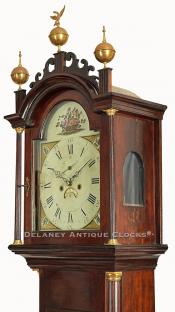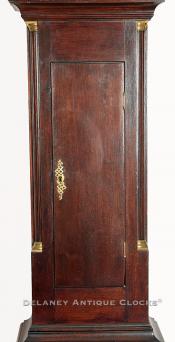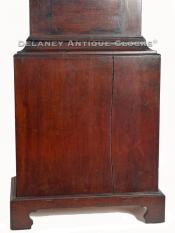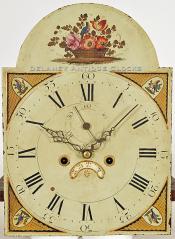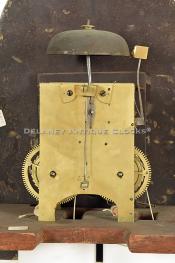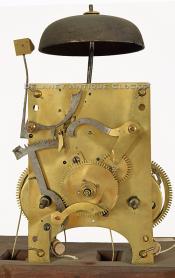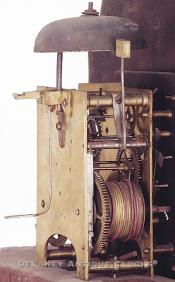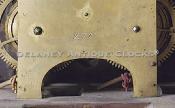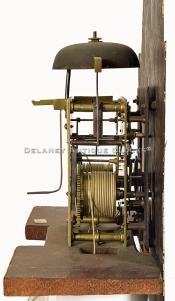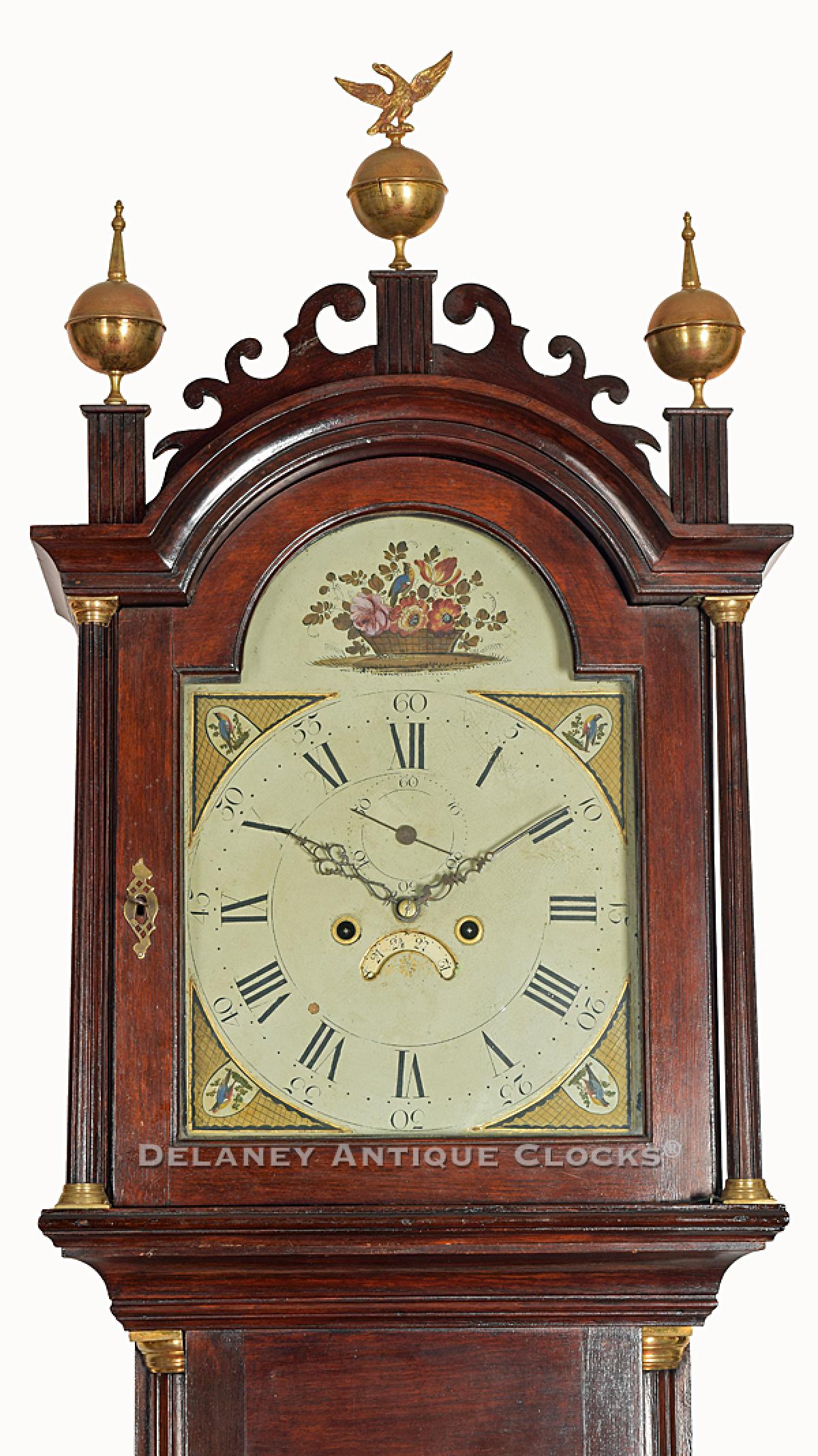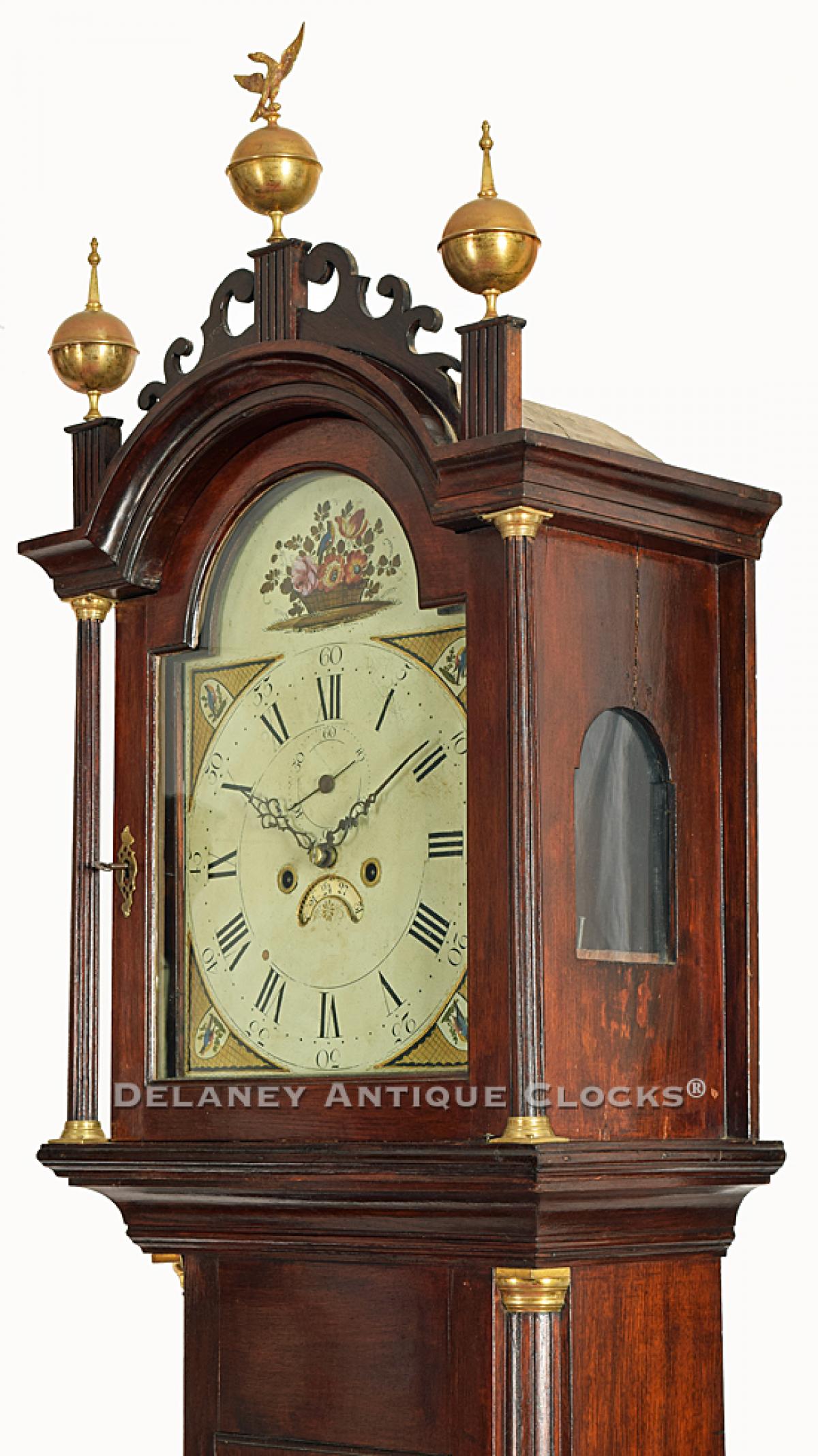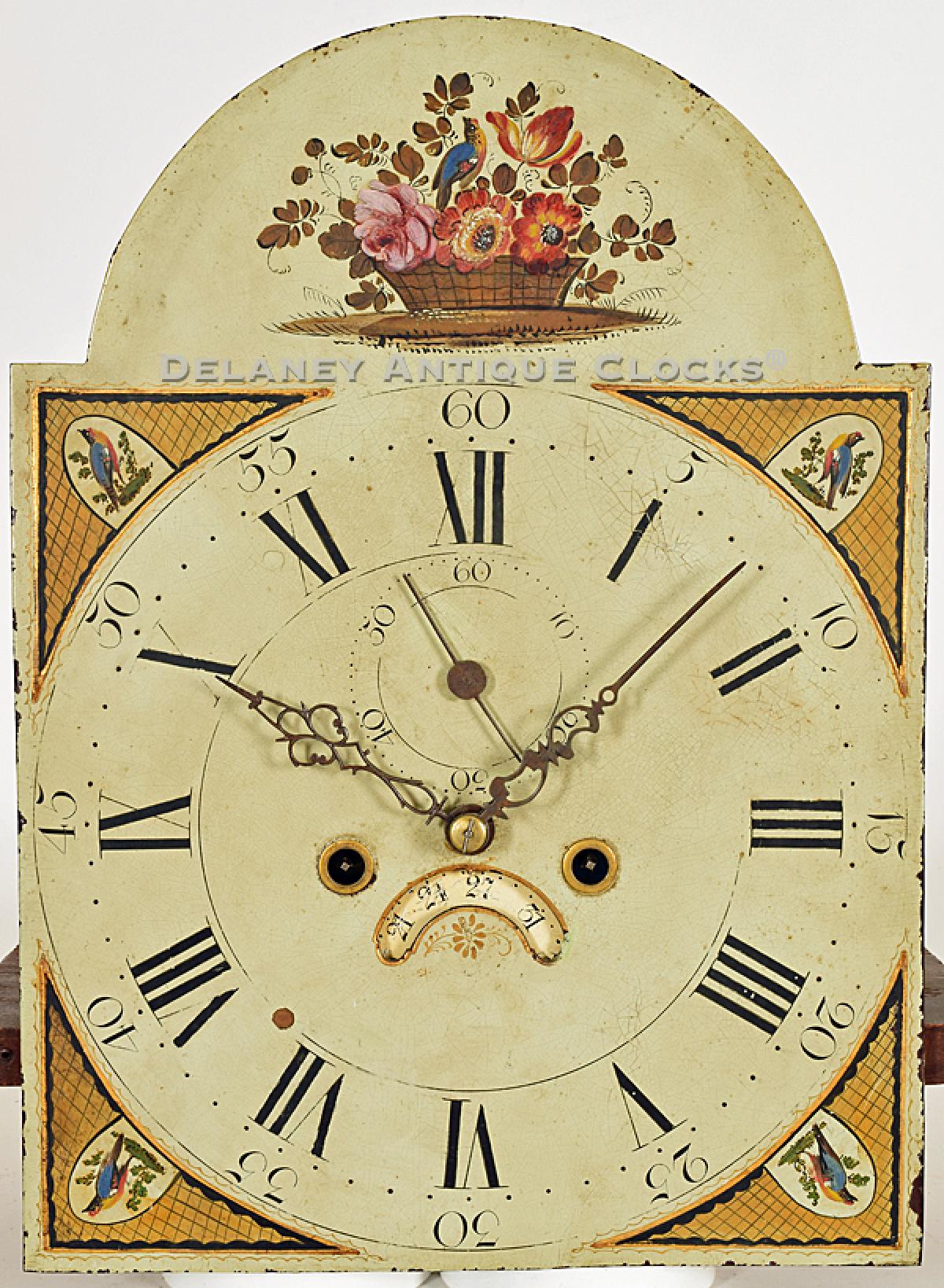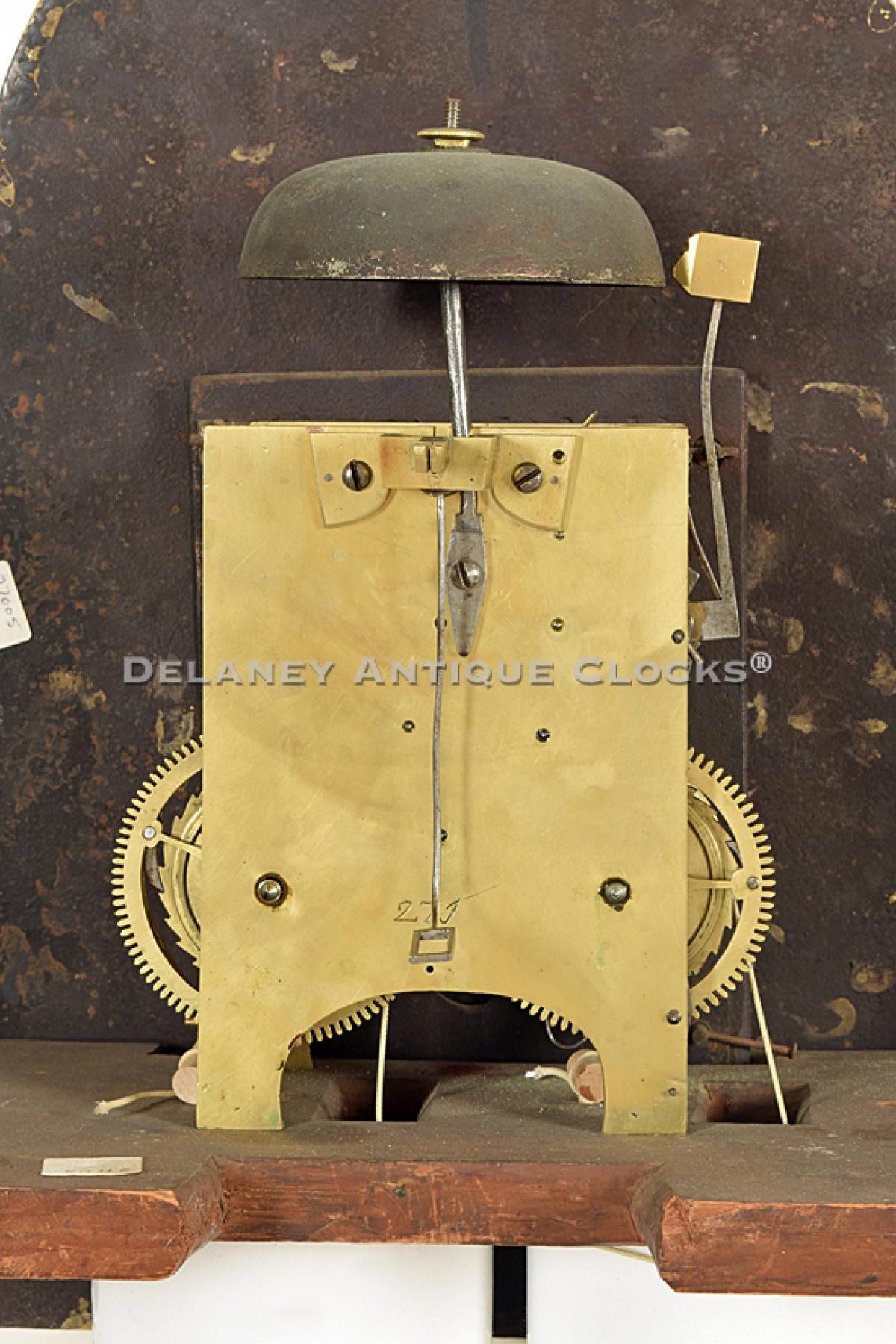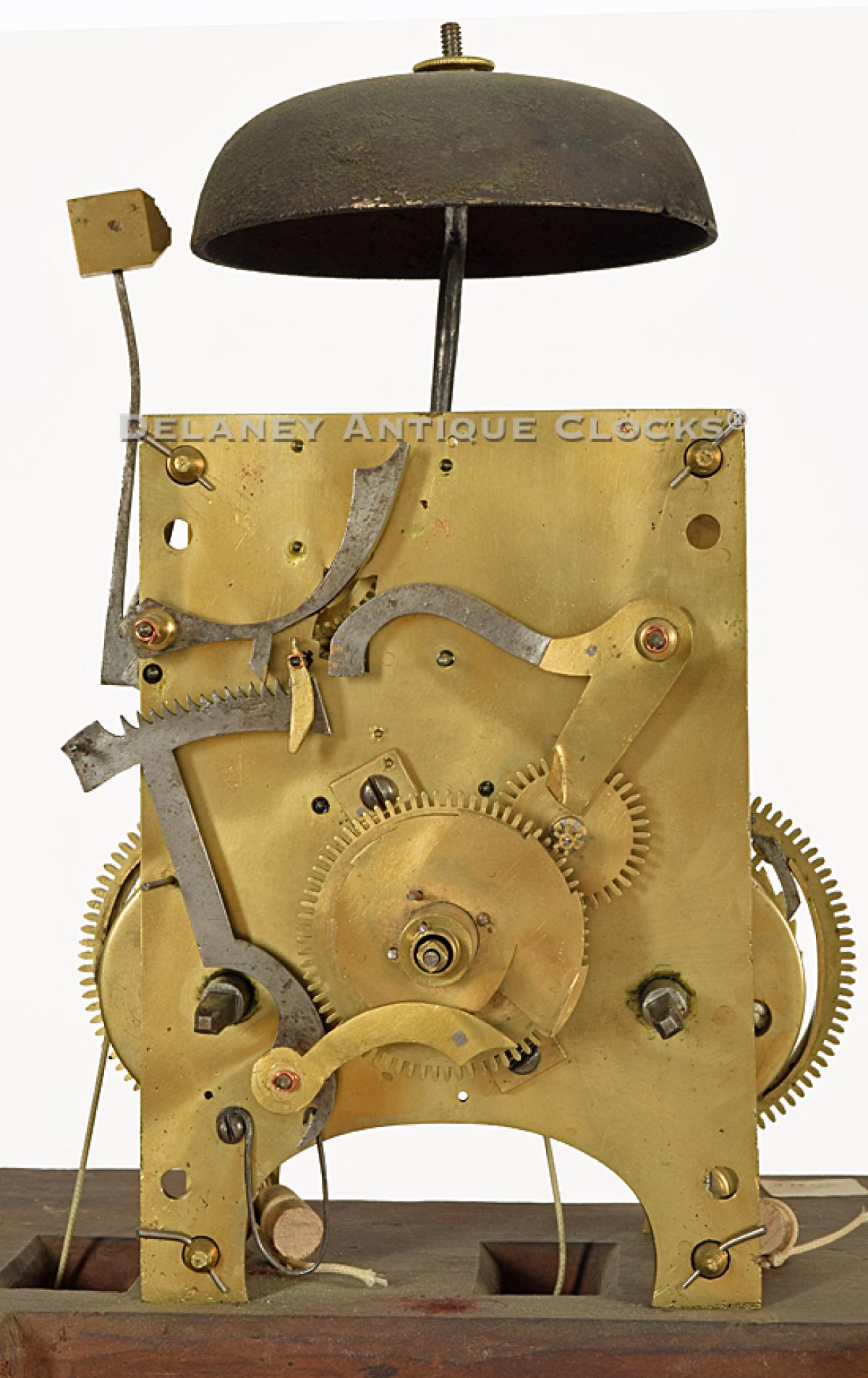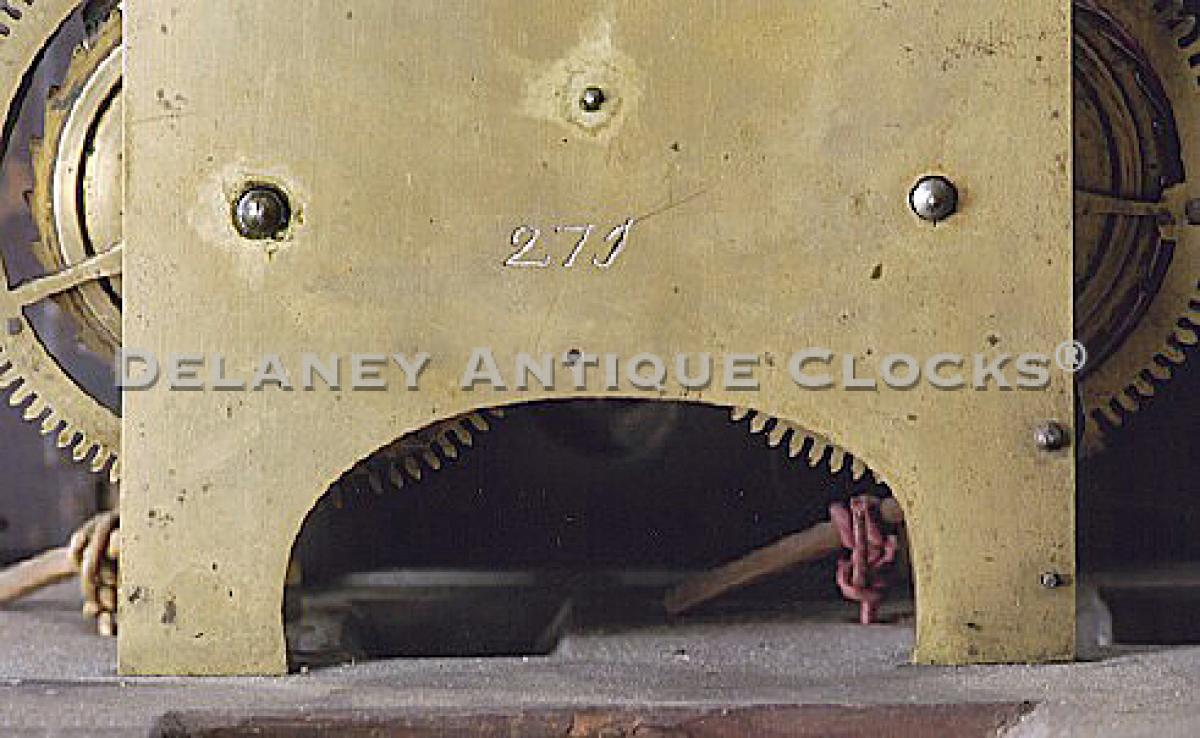John Osgood tall clock. Haverhill, New Hampshire. No. 271. 27005.
This example is not signed on the dial by the Maker but does have an engraved number “271” on the back plate. This is a practice we have seen on the many other signed Osgood tall clock movements. Interestingly, we have recorded movements, both signed and unsigned dials, in a fairly uniform spread between the numbers 14 and 377. We have personally owned and sold numbers as low as “14” and as high as the number “374.” In addition to the engraved number on the backplate, Osgood used a distinctive arrangement of strike work. Many of the lifting arms have a very distinctive curve. This fine example shares both of these traits.
This well-proportioned birch case retains its original mahogany staining. As a result, the case is darker than birch wood's natural belch blond color. This case form is quite typical of other Osgood clocks known. This case form is one that we see in frequency and, as a result, must have been his most successfully sold model. This clock case stands on applied bracket feet. The waist section is long. It is fitted with a rectangular-shaped waist door trimmed with a simple molded edge. This door is flanked by inset quarter columns which are smoothly turned and fluted along their length. These terminate in brass quarter capitals. The bonnet features an arched glazed door, fully turned bonnet columns, and the traditional “whales’ tails” fretwork style ornament. Three large brass ball-and-spiked finials surmount the top of this case and are mounted on fluted plinths.
The iron dial is colorfully painted. Yellow-painted spandrel areas are decorated with a cross-hatched design. A bluebird is centered in each corner. A basket of flowers is depicted in the arch. The various flowers are colorfully represented. A bluebird is standing in the center of the scene. The time track is formatted with a combination of Roman and Arabic numerals. This dial also features five-minute markers, subsidiary seconds, and a day-of-the-month calendar. The iron hands are hand filed and are a traditional form.
The time and strike movement is of good quality and is designed to run for eight days on a full wind. It is weight driven. The back plate is engraved with the “ 271.” This is skillfully executed. Another detail worth mentioning is that of the strike work. The levers are quite distinctive and share the form found in other Osgood examples.
This clock was made circa 1810 and stands 7 feet 10.5 inches to the top of its center finial.
Inventory number 27005.
John Osgood was born in North Andover, Massachusetts, on June 20, 1770. He was the son of Colonel John and (his second wife) Hulda (Frye) Osgood. The Colonel's first wife was the sister of Dudley and Michael Carleton. Their father, Squire Dudley Carlton, had a farm on the Merrimack River. Both Dudley and Michael are identified as clockmakers but more likely cabinetmakers. Michael was also a skilled cabinetmaker and later worked in Bradford and Newbury, Vermont. John Osgood moved to Bradford, MA, where he served his clockmakers apprenticeship to his uncle Michael Carlton of that town. Osgood returned to Andover sometime in early 1790. Here he married Sarah Porter of Haverhill, who came from Boxford (MA). They had a total of 6 children. In 1793, John moved his family to Haverhill, New Hampshire, where he continued his business of making clocks, silversmithing, and did watch and jewelry repair. He took out an ad on November 4, 1793, in the Spooner's Vermont Journal that informed the public that he had opened a shop there in the south end of John Montgomery's house. Michael Carlton had already established a cabinet shop across the river in Vermont and may have convinced John to move north. Carleton was making fine furniture, which some considered "Handsomer and more serviceable than what could be purchased in the cities." Osgood's shop was located 200 feet to the North of his own home on Main Street. It was a square one-story building with a divided front door and a window on each side. There were two rooms in front and a salesroom in the back. He was successful there. Within two years, he was elected to the town position of Sealer of Weights and Measures. Over the years, he employed several apprentices. He often bartered for services. His account books record that he squared with wheat, corn, oats, and salt pork. On March 4, 1797, John Married Sarah Porter. Together they had seven children, all born in Haverhill. A grandson remembered John Osgood as a friendly, warm person. He was clean-shaven, "bald from age," smallish in stature, and inclined to stoop while walking with a limp. (One knee suffered from a white swelling as a child. The joint was useless.) He was a member of the four founders of the Social Library in 1801. He was also a devout Christian man. He was a devoted disciple of Isaac Walton and Tarlton Pond. John Osgood died in his own home on July 29, 1840, reportedly of consumption. He is buried in the Ladd Street Cemetery alongside his wife. At his death, he owned his house, shop, and a good farm east of the village where his brother-in-law Billy Porter lived.
John Osgood's clocks are often numbered. It is not uncommon to find a production number engraved into one of the movement plates. More commonly, it can be found on the back plate. To date, we have seen at least 25 examples and counting. The lowest number we have seen is 14. The highest number recorded by us is No. 377.
Why move to Haverhill, New Hampshire? The town of Haverhill, NH, was settled by citizens of Haverhill, MA and was incorporated in 1763 by Colonial Governor Benning Wentworth. In 1773, it became the county seat of Grafton County. Businesses located there included gristmills, lumber mills, sawmills, woolen mills, potash, tanneries, flax mills, iron foundry, and related businesses. Haverhill's location on the Connecticut River presented a lot of opportunities.




